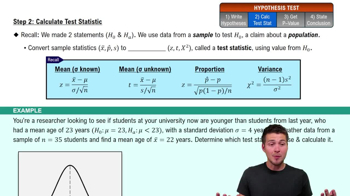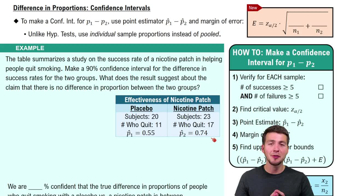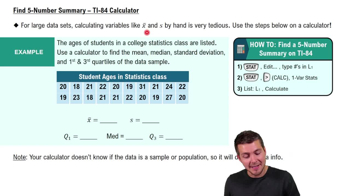Here are the essential concepts you must grasp in order to answer the question correctly.
Runs Test
The Runs Test is a non-parametric statistical test used to determine the randomness of a sequence of data. It analyzes the occurrence of runs, which are sequences of similar items, to assess whether the order of the items is random or exhibits a pattern. In the context of political party affiliations, it helps to evaluate if the sequence of 'R' and 'D' affiliations is random or shows a preference for one party over the other.
Recommended video:
Step 2: Calculate Test Statistic
n1 and n2
In the context of the Runs Test, n1 and n2 represent the number of occurrences of each category in the sequence being analyzed. For example, n1 could denote the number of Republicans (R) and n2 the number of Democrats (D) in the given sequence. These values are essential for calculating the expected number of runs and determining the test's significance.
Recommended video:
Difference in Proportions: Confidence Intervals
G (Number of Runs)
G, or the number of runs, is a key statistic in the Runs Test that counts the total number of uninterrupted sequences of similar items in the data. A run is defined as a sequence of consecutive identical elements, such as a series of 'R's followed by 'D's. The value of G is compared against expected values to assess whether the observed runs indicate randomness or a systematic pattern in the data.
Recommended video:
Find 5-Number Summary - TI-84 Calculator






